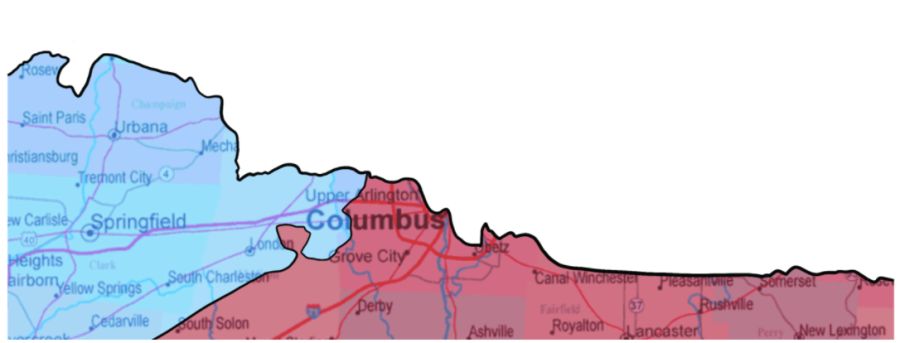Prioritize representative redistricting
One gerrymandering tactic used during this redistricting cycle is “cracking”.
With the 2020 U.S. census results finalized, the legislative redistricting process is unfolding. State legislators and commissioners toil behind closed doors to polish congressional maps that will ration political power into districts for years to come. However, as states release their plans, a common theme is emerging: State maps are filled with oddly-shaped, snakelike districts. Thin strips extend for miles, rendering states almost unrecognizable. The culprit here is gerrymandering: the practice of manipulating district maps for partisan gain. Gerrymandering is an epidemic that is corroding American democracy.
One gerrymandering tactic used during this redistricting cycle is “cracking”—dividing a compact group of homogenous voters into multiple districts and thus diluting their voting power. North Carolina’s approved map serves as a good example: By breaking up heavily Democratic Greensboro, Republicans will hold at least 10 of 14 Congressional districts in a state where President Joe Biden won nearly 49% of the vote. Democrats in Illinois are poised to win a whopping 14 of 17 districts through an elaborate, serpent-esque gerrymander after Biden only won about 58% of the vote in 2020.
Although this tactic is not new, it still poses a direct threat to popular government, since whoever is currently in power is able to maintain control for decades by packing voters into nonsensical districts. Because of gerrymandering, voters cannot choose politicians—politicians choose voters. With each census, political parties become increasingly entrenched in state governments. As congressional races become less competitive and more “safe” seats are drawn, disenfranchised voters may grow complacent and could be less likely to participate.
Gerrymandering is a more immediate threat than many citizens realize. If currently approved maps remain across the country, Republicans have enough seats to take back the House of Representatives in 2022 solely through gerrymandered safe seats. They do not need to flip any seats currently held by Democrats to gain control; these manipulated district maps will do the work for them. The state of our federal government, including who will serve as Speaker of the House and will control committees, is quietly being pried from voters’ hands.
The only way forward is for citizens to recognize gerrymandering as the attack on democracy that it truly is and pressure state governments to draw maps fairly. Several states, such as California and Colorado, use non-partisan commissions to draw maps rather than legislatures or governors. States could also automate the redistricting process or restrict efficiency gaps, which are numerical measures of how much a map benefits one party or the other.
In the meantime, communities should challenge doctored maps in the legal system. This avenue has been successful in the past; for example, the Pennsylvania Supreme Court threw out a gerrymandered map in 2018, leading to more fair results in that year’s midterm elections and giving Republicans and Democrats an equal number of seats. The catastrophic impact of gerrymandering cannot be overstated. Americans are slowly being cheated out of their voting power. Until gerrymandering is viewed as more than a procedural problem in politics, our democracy will continue to backslide at the hands of power-hungry politicians.






































